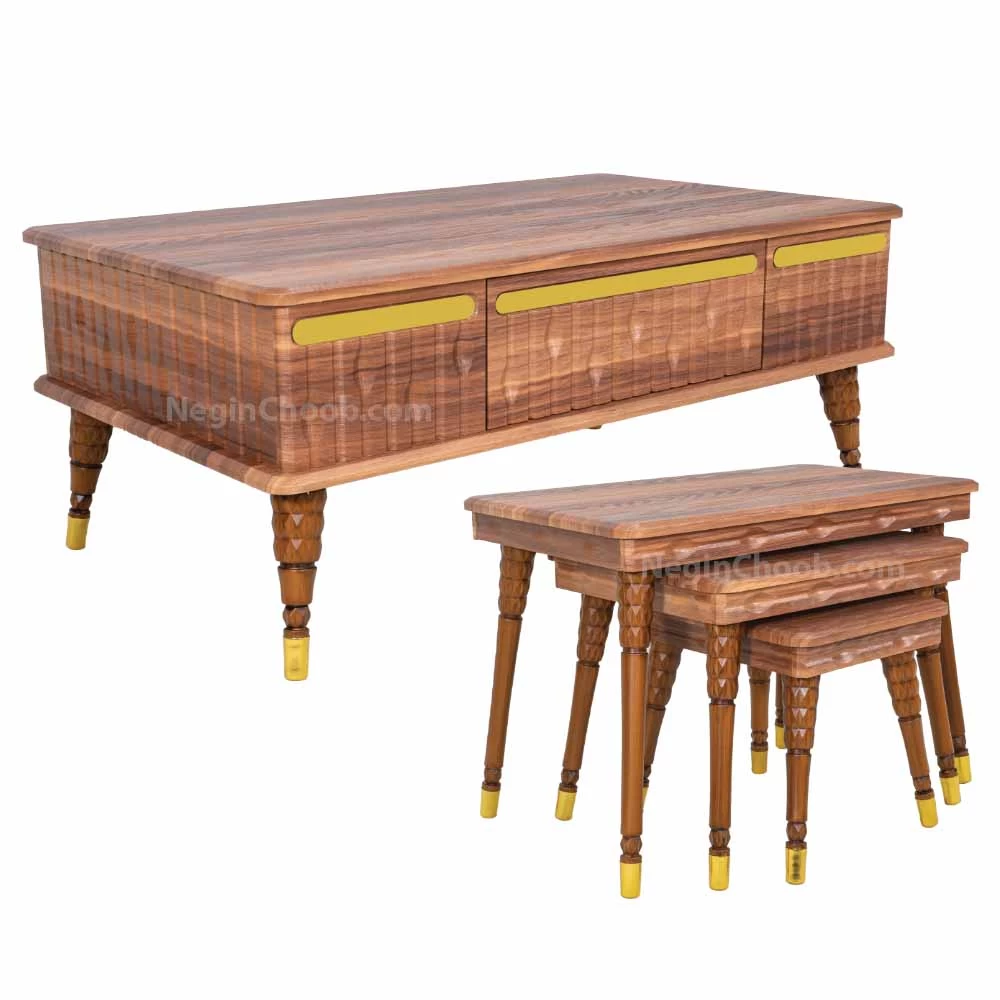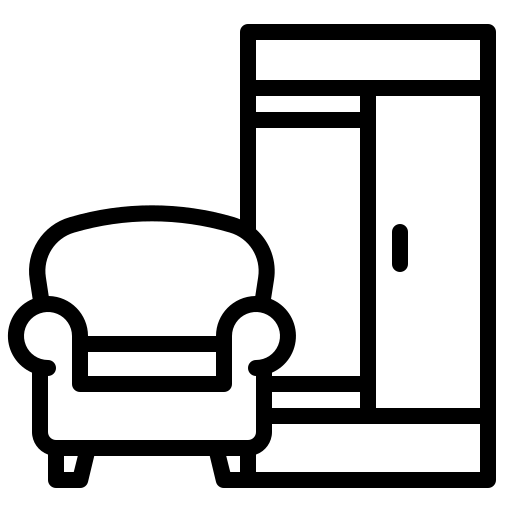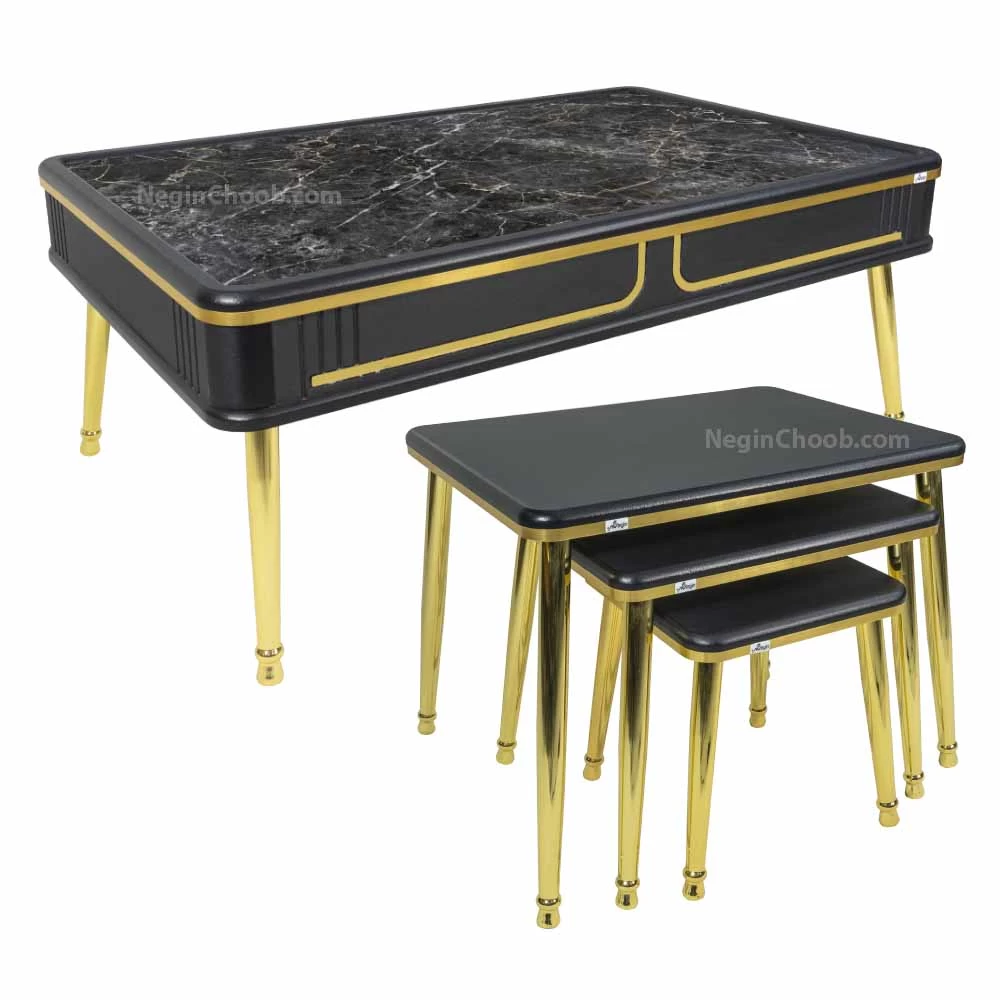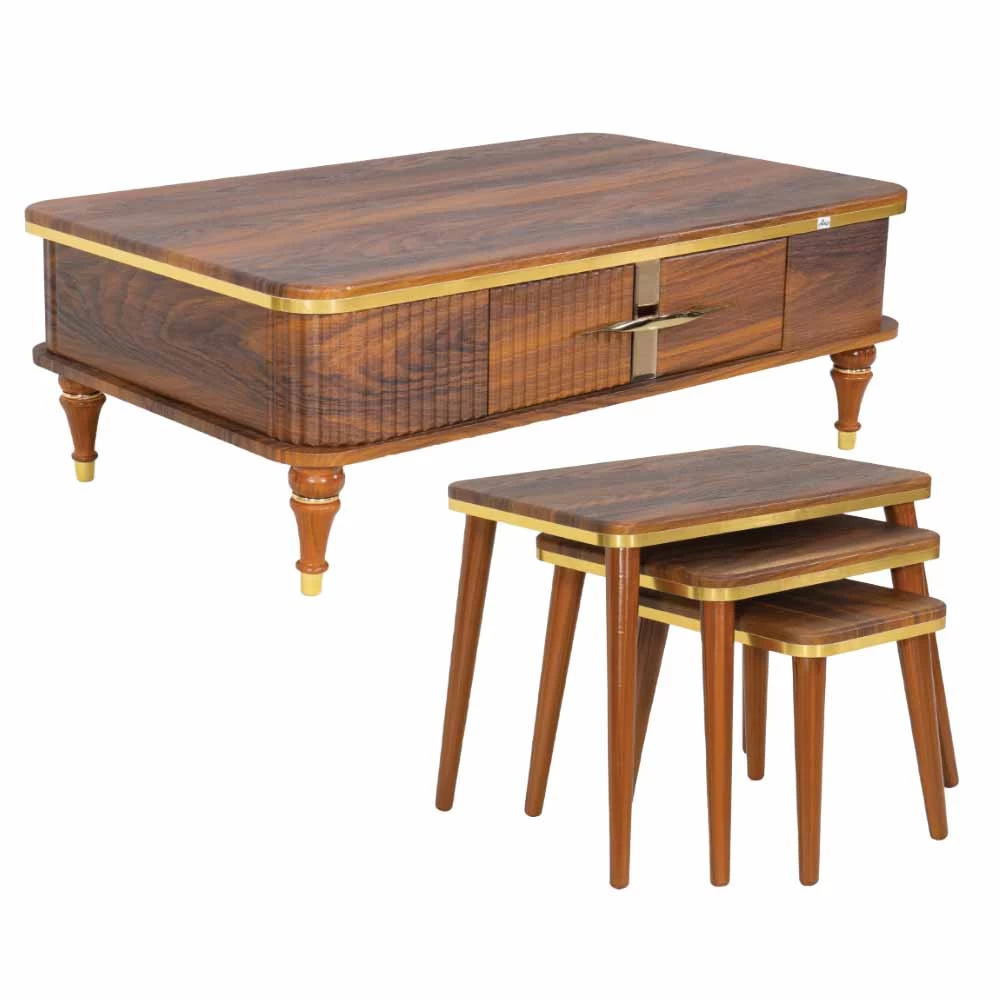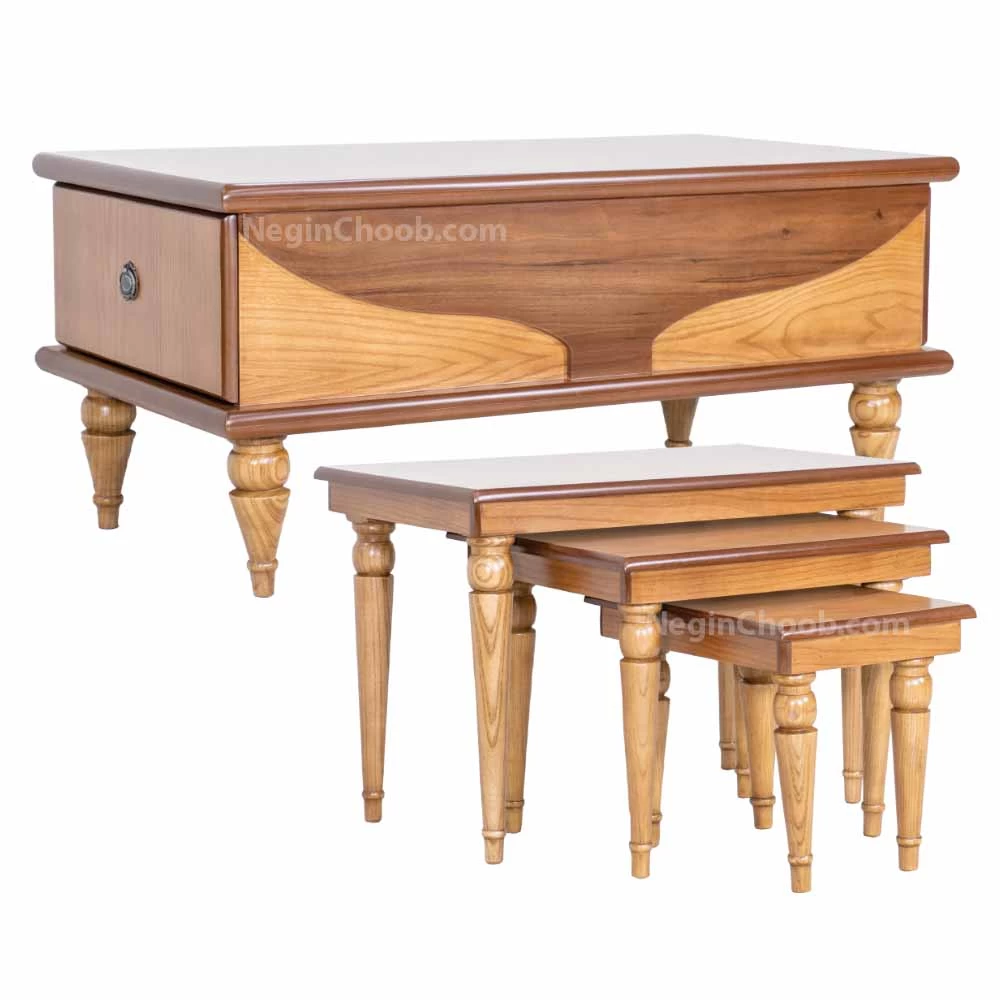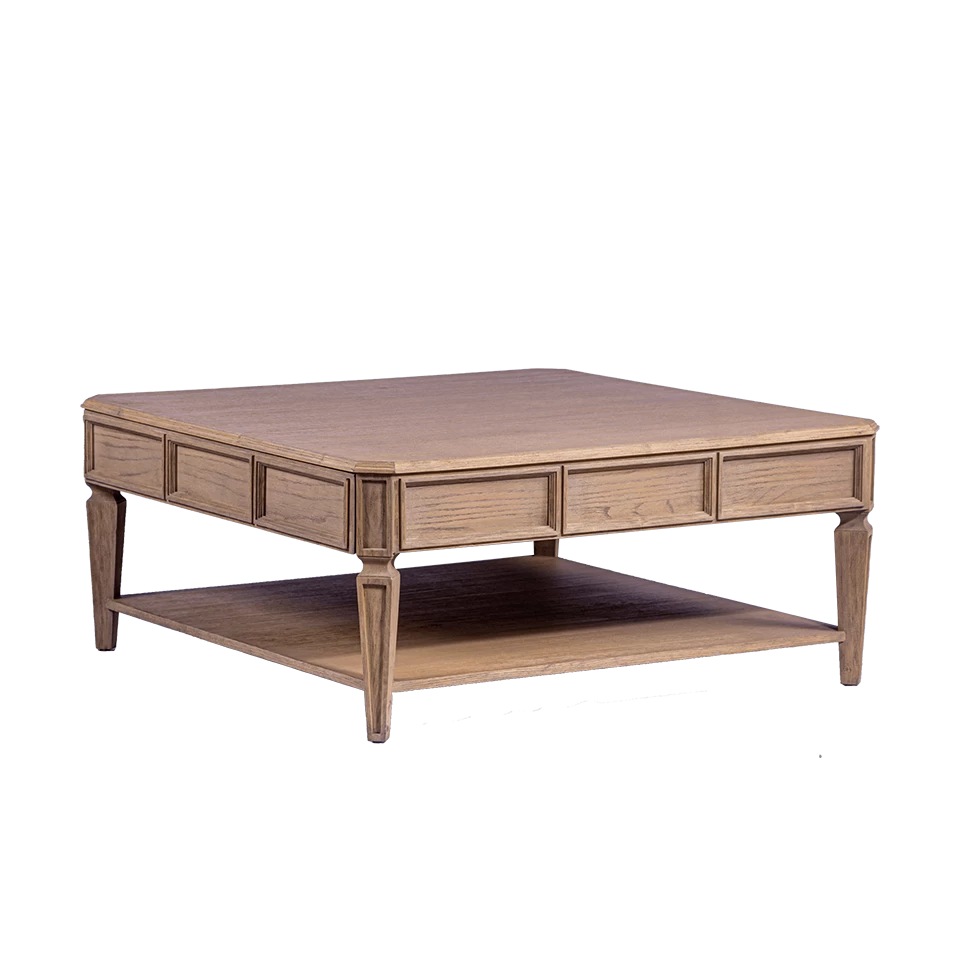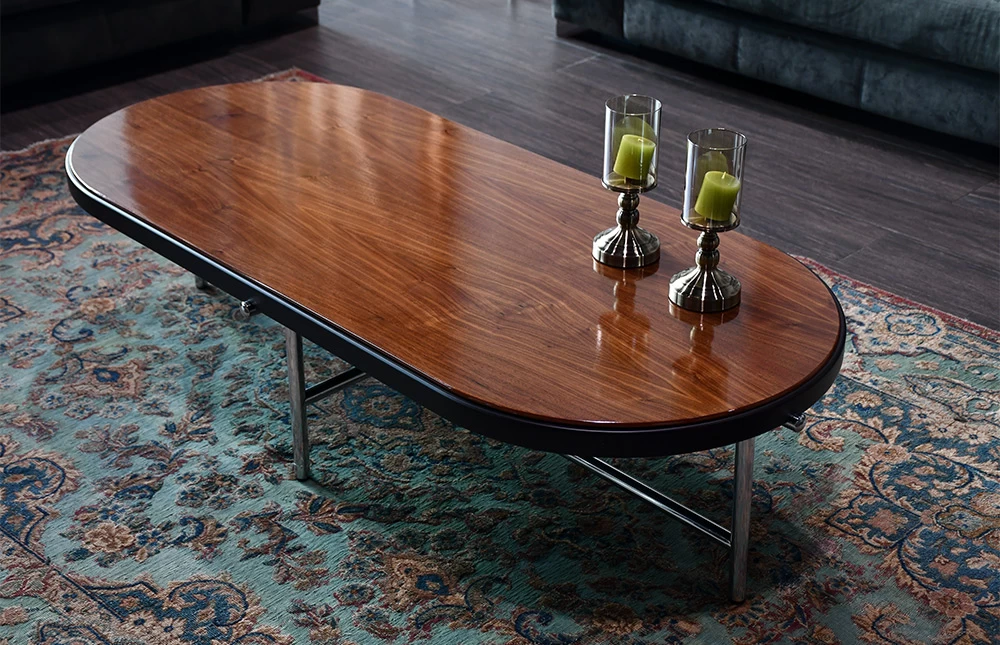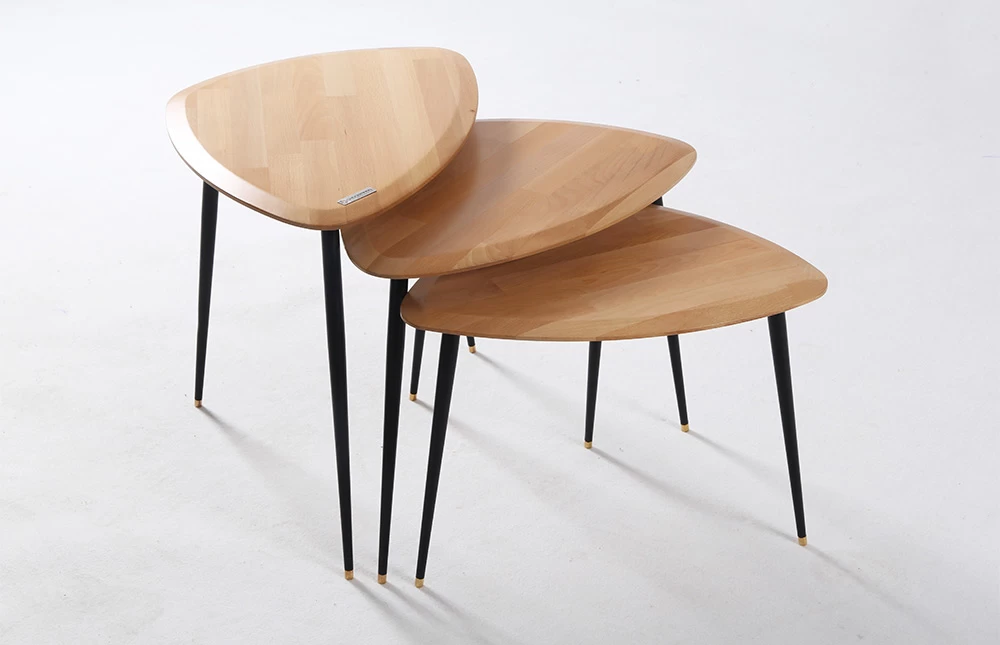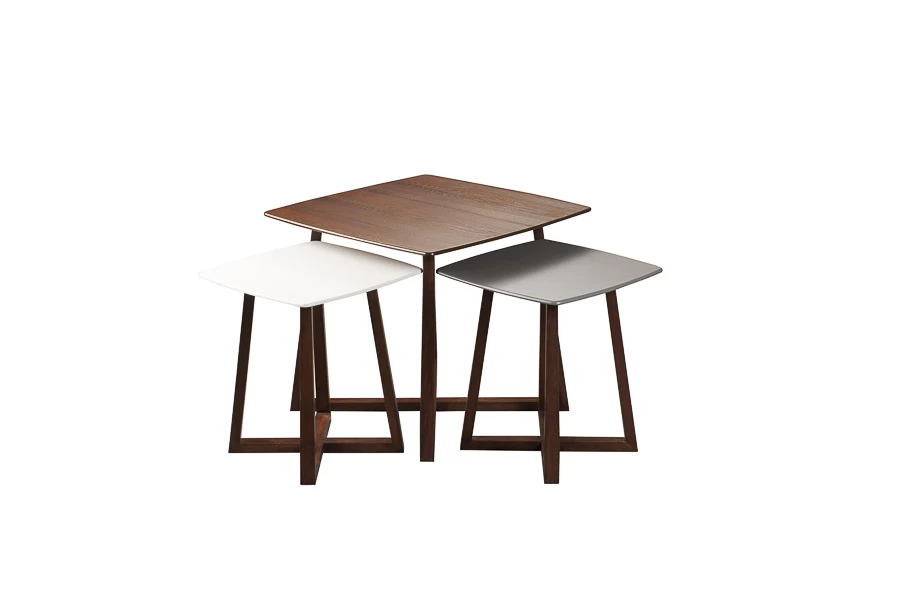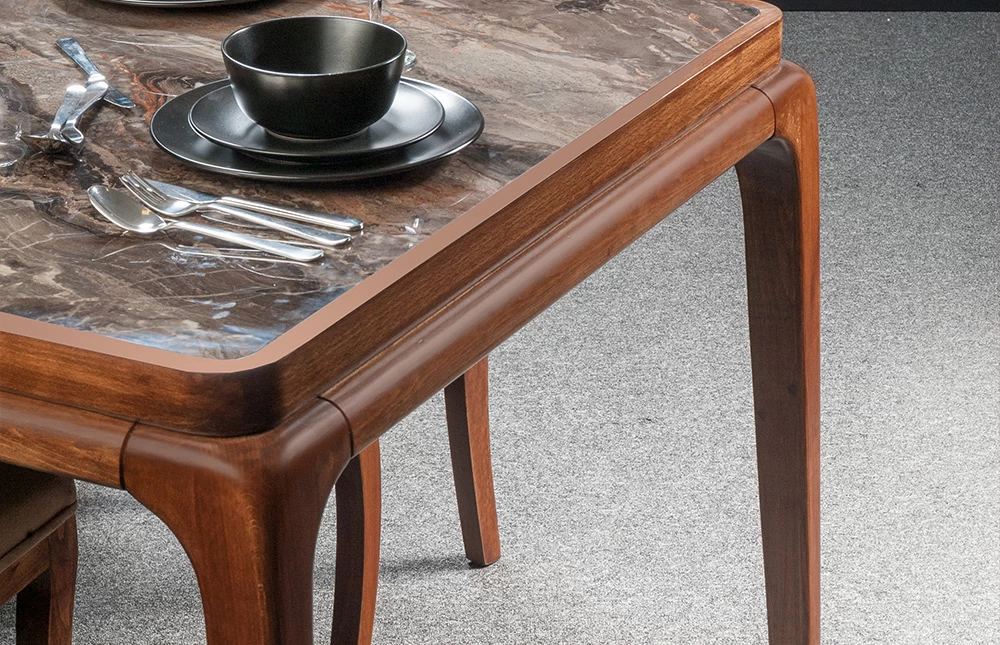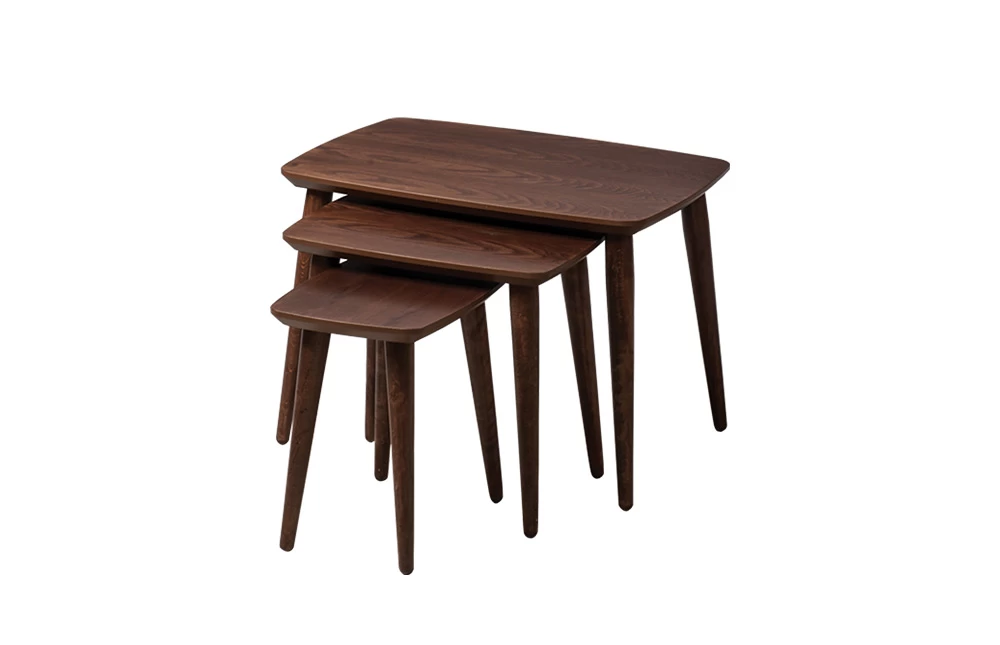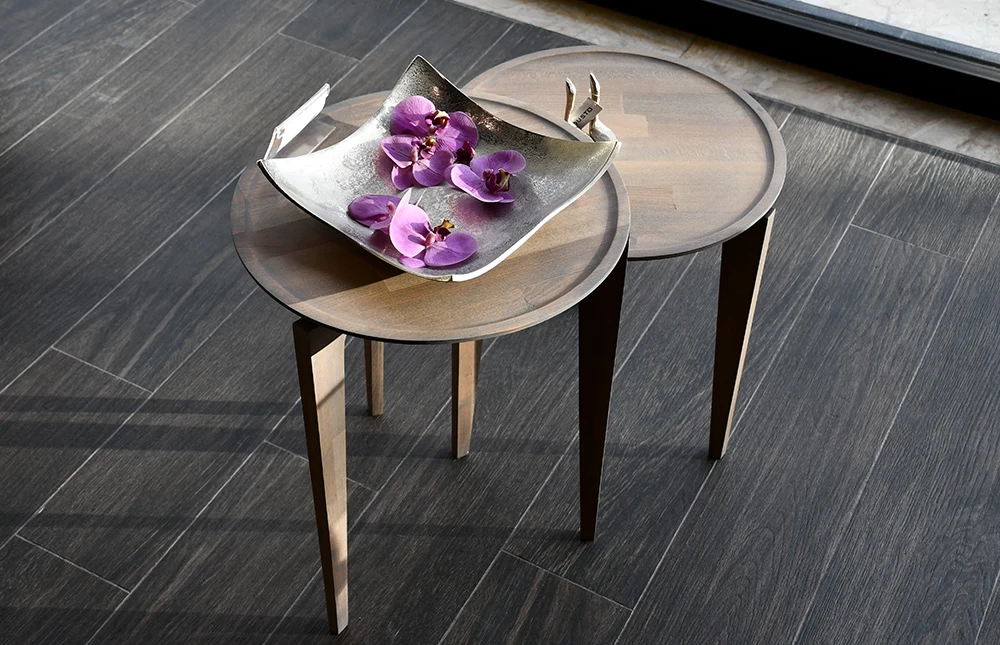Coffee Table
Coffee tables are low, rectangular tables that are typically placed in front of a sofa or seating area in a living room.
They serve a functional purpose of providing a surface for setting down drinks, books, magazines, and other items. Coffee tables come in a wide variety of materials, styles, and designs to suit different tastes and decor.
Common materials used for coffee tables include wood, glass, metal, stone, and even concrete or reclaimed materials. Wood coffee tables are very popular and come in styles ranging from rustic and farmhouse to modern and minimalist. Glass coffee tables offer a sleek, transparent look that can make a room feel more open. Metal coffee tables, such as those with a steel or iron frame, have an industrial or contemporary feel. Stone and concrete coffee tables tend to have a more substantial, weighty appearance.
Beyond the material, coffee tables come in different shapes like rectangular, square, round, oval, and even uniquely shaped designs. Some have additional features like shelves, drawers, or built-in storage to help keep living spaces organized. The size of a coffee table should be proportional to the size of the seating area - not too small or too large.
In addition to their practical use, coffee tables can be an important design element that anchors and ties together the furniture and decor in a living room. Styling a coffee table with decorative objects, books, trays, and plants can make it a focal point and reflect the homeowner's personal style.
Overall, the coffee table is a classic, versatile piece of furniture that serves both functional and aesthetic purposes in a living space. Choosing the right coffee table can have a big impact on the look and feel of a room.
When choosing a coffee table to pair with a sofa, there are a few key factors to consider:
Size:
- The coffee table should be sized appropriately for the sofa. As a general rule, the coffee table should be about 12-18 inches shorter than the sofa's width.
- The height of the coffee table should be around the same height or slightly lower than the seat cushion of the sofa, usually between 14-18 inches tall.
Shape:
- The shape of the coffee table should complement the shape of the sofa. For example, a square or rectangular sofa pairs well with a square or rectangular coffee table.
- Round or oval coffee tables can work nicely with L-shaped or curved sectional sofas.
Material:
- The material of the coffee table should coordinate with the sofa's upholstery and the overall decor style.
- Wood coffee tables tend to work well with more traditional or rustic style sofas.
- Glass, metal, or stone coffee tables pair nicely with modern or minimalist sofas.
Style:
- The design style of the coffee table should match or at least complement the style of the sofa.
- For example, a mid-century modern sofa would look best with a coffee table in a similar sleek, geometric style.
- Transitional or eclectic spaces can mix different coffee table and sofa styles as long as they have some cohesive elements.

Functionality:
- Consider how you want to use the coffee table - for storage, display, or just as a surface.
- Choose a coffee table with the right features, like drawers, shelves, or a large tabletop, to meet your needs.
Taking the time to select a coffee table that is properly scaled and styled for your sofa will create a cohesive, balanced look in your living room. Mixing different materials, shapes, and designs can also add visual interest.
Coffee tables are considered a type of furniture. They are categorized as a piece of living room furniture, along with sofas, chairs, end tables, and other items that furnish and decorate a living space.
There are a few key reasons why coffee tables are classified as furniture:
1. Primary Function
Coffee tables serve the practical function of providing a low, flat surface for placing drinks, books, magazines, and other items in a living room or family room setting. This functional purpose is a core characteristic of furniture.
2. Designed for Seating Areas
Coffee tables are specifically designed to be placed in front of seating areas, such as sofas and armchairs. They are sized and shaped to complement and integrate with living room furniture arrangements.
3. Constructed Using Furniture Materials
Coffee tables are constructed using materials commonly associated with furniture, such as wood, glass, metal, stone, and various composite materials. They are built and assembled using standard furniture manufacturing techniques.
there are several notable styles and trends in contemporary coffee table design:
1. Industrial/Modern Rustic
Industrial-inspired coffee tables featuring metal frames, distressed wood tops, and exposed hardware have become very popular. These blend modern and rustic elements for a rugged, yet refined look.
2. Minimalist/Scandinavian
Clean-lined, minimalist coffee tables with simple geometric shapes and neutral colors or natural wood finishes reflect the Scandinavian design aesthetic. The focus is on functionality and understated elegance.
3. Glass and Metal
Contemporary coffee tables that combine glass tops with metal or metal-framed bases create a sleek, modern aesthetic. The transparency of the glass makes the table feel lighter and more open.
Overall, today's coffee table designs reflect a wide range of contemporary influences, from industrial chic to minimalist Scandinavian, often with a focus on mixed materials and customizable features.

There are several materials and finishes that are very popular in contemporary coffee table designs:
1. Wood
Wood remains one of the most common and versatile materials for coffee tables. Popular wood options include:
- Oak - with its distinctive graining and light/medium tones
- Walnut - a rich, warm brown color with a classic look
- Reclaimed/rustic wood - with a weathered, distressed finish
- Lighter woods like maple or ash for a more modern aesthetic
2. Glass
Glass coffee tables offer a sleek, transparent look that can visually open up a space. Glass tabletops are often paired with:
- Metal frames (e.g. steel, iron, brass)
- Wooden or stone bases
- Minimalist, geometric designs
3. Metal
Metal coffee tables, especially those with an industrial or modern look, are very on-trend. Popular metal finishes include:
- Steel or iron with a raw, blackened, or oiled finish
- Polished or brushed brass/gold tones
- Matte black or graphite powder coats
4. Stone/Concrete
Heavier, more substantial materials like stone (e.g. marble, granite, travertine) and concrete are increasingly used for coffee tables, often in:
- Monolithic, minimalist designs
- Slab or chunky block styles
- Light or dark tones
Overall, the materials and finishes used in contemporary coffee tables reflect a range of styles - from sleek and minimalist to industrial and rustic. The use of mixed media is a prevalent trend.
- The coffee table should be sized appropriately for the sofa. As a general rule, the coffee table should be about 12-18 inches shorter than the sofa's width.
- The height of the coffee table should be around the same height or slightly lower than the seat cushion of the sofa, usually between 14-18 inches tall.
- The shape of the coffee table should complement the shape of the sofa. For example, a square or rectangular sofa pairs well with a square or rectangular coffee table.
- Round or oval coffee tables can work nicely with L-shaped or curved sectional sofas.
- The material of the coffee table should coordinate with the sofa's upholstery and the overall decor style.
- Wood coffee tables tend to work well with more traditional or rustic style sofas.
- Glass, metal, or stone coffee tables pair nicely with modern or minimalist sofas.
- The design style of the coffee table should match or at least complement the style of the sofa.
- For example, a mid-century modern sofa would look best with a coffee table in a similar sleek, geometric style.
- Transitional or eclectic spaces can mix different coffee table and sofa styles as long as they have some cohesive elements.

- Consider how you want to use the coffee table - for storage, display, or just as a surface.
- Choose a coffee table with the right features, like drawers, shelves, or a large tabletop, to meet your needs.
Coffee tables serve the practical function of providing a low, flat surface for placing drinks, books, magazines, and other items in a living room or family room setting. This functional purpose is a core characteristic of furniture.
Coffee tables are specifically designed to be placed in front of seating areas, such as sofas and armchairs. They are sized and shaped to complement and integrate with living room furniture arrangements.
Coffee tables are constructed using materials commonly associated with furniture, such as wood, glass, metal, stone, and various composite materials. They are built and assembled using standard furniture manufacturing techniques.
Industrial-inspired coffee tables featuring metal frames, distressed wood tops, and exposed hardware have become very popular. These blend modern and rustic elements for a rugged, yet refined look.
Clean-lined, minimalist coffee tables with simple geometric shapes and neutral colors or natural wood finishes reflect the Scandinavian design aesthetic. The focus is on functionality and understated elegance.
Contemporary coffee tables that combine glass tops with metal or metal-framed bases create a sleek, modern aesthetic. The transparency of the glass makes the table feel lighter and more open.

Wood remains one of the most common and versatile materials for coffee tables. Popular wood options include:
- Oak - with its distinctive graining and light/medium tones
- Walnut - a rich, warm brown color with a classic look
- Reclaimed/rustic wood - with a weathered, distressed finish
- Lighter woods like maple or ash for a more modern aesthetic
Glass coffee tables offer a sleek, transparent look that can visually open up a space. Glass tabletops are often paired with:
- Metal frames (e.g. steel, iron, brass)
- Wooden or stone bases
- Minimalist, geometric designs
Metal coffee tables, especially those with an industrial or modern look, are very on-trend. Popular metal finishes include:
- Steel or iron with a raw, blackened, or oiled finish
- Polished or brushed brass/gold tones
- Matte black or graphite powder coats
Heavier, more substantial materials like stone (e.g. marble, granite, travertine) and concrete are increasingly used for coffee tables, often in:
- Monolithic, minimalist designs
- Slab or chunky block styles
- Light or dark tones
Overall, the materials and finishes used in contemporary coffee tables reflect a range of styles - from sleek and minimalist to industrial and rustic. The use of mixed media is a prevalent trend.
FAQs
What are the key factors to consider when choosing a coffee table for a sofa?
Size, shape, material, style, and functionality are the main factors to consider when pairing a coffee table with a sofa.
Are coffee tables considered furniture?
Yes, coffee tables are classified as a type of living room furniture due to their practical function, designed placement, construction materials, and decorative role.
What are some popular styles and trends in contemporary coffee table design?
Prevalent styles include industrial/modern rustic, minimalist/Scandinavian, glass and metal, mixed materials, modular/nesting, oversized statement pieces, and rounded/curved shapes.
What materials and finishes are most commonly used in modern coffee table designs?
Wood, glass, metal, stone/concrete, and combinations of natural materials are all very popular in contemporary coffee table construction and finishes.
 +7929688-88-14
+7929688-88-14

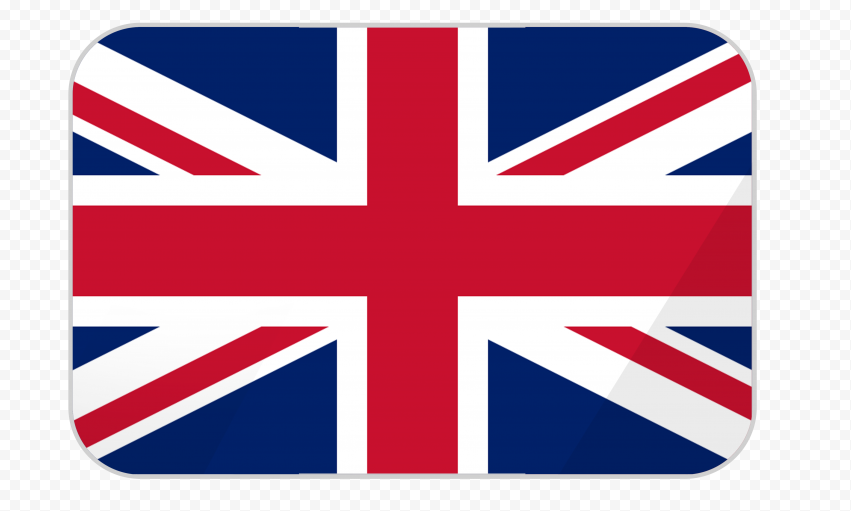 English
English
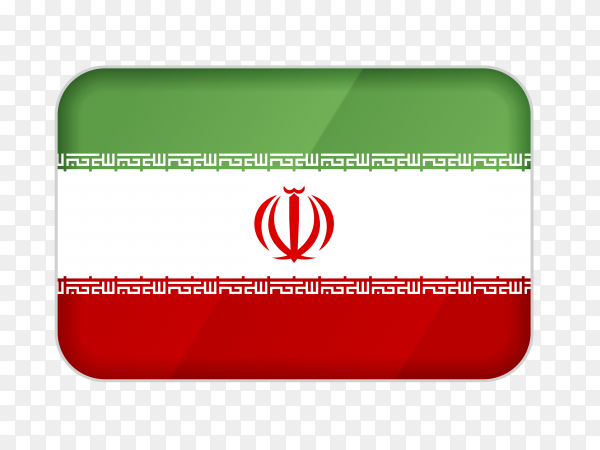 Persian
Persian
 Russian
Russian
 Chinese
Chinese


 +7929688-88-14
+7929688-88-14

